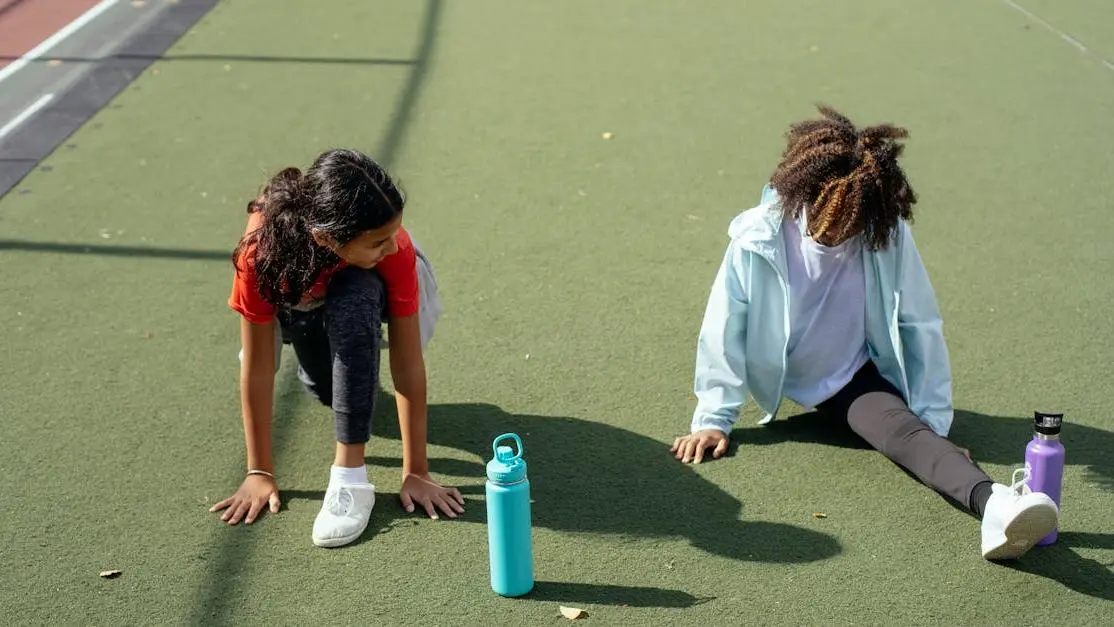Struggling to enhance your fitness routine without hitting the gym?
Calisthenics exercises might be the perfect solution. This article breaks down the most effective calisthenics workouts, providing you with a versatile and convenient way to build strength and flexibility anytime, anywhere.
Whether you’re a beginner or looking to elevate your existing regimen, these exercises will transform your approach to fitness.
- 1. Push-Ups for Upper Body Strength
- 2. Pull-Ups to Target Back Muscles
- 3. Dips for Triceps and Chest Development
- 4. Squats to Build Leg Strength
- 5. Planks for Core Stability
- 6. Lunges for Lower Body Toning
- 7. Burpees for Full-Body Conditioning
- 8. Leg Raises for Lower Abdominals
- 9. Handstand Push-Ups for Shoulder Power
- 10. Mountain Climbers for Cardio and Core
- 11. Glute Bridges for Posterior Chain Activation
- 12. Box Jumps for Explosive Power
- 13. Hollow Body Holds for Core Strength
- 14. Pistol Squats for Single-Leg Strength
- 15. Superman Exercises for Back and Core
- Understanding Calisthenics vs. Weight Training
- Equipment for Calisthenics
- Tips for Calisthenics Beginners
- What Is Calisthenics?
- Conclusion and Next Steps
1. Push-Ups for Upper Body Strength
Push-ups are a timeless calisthenics exercise that you can do almost anywhere. They primarily work your chest, triceps, and shoulders, providing a solid foundation for upper body strength.
Variations:
- Standard Push-Up: Place your hands shoulder-width apart. Lower your body until your chest is just above the ground, then push back up.
- Wide-Grip Push-Up: Place your hands wider than shoulder-width to target your chest even more.
- Diamond Push-Up: Bring your hands together to form a diamond shape, which intensifies the focus on your triceps.
Benefits:
- Strengthens the Chest and Triceps: Push-ups are highly effective for building the pecs and triceps.
- Enhances Core Stability: Proper form ensures your core stays engaged.
- Versatile and Scalable: Easy to modify based on skill level.
Improving your push-up game can lead to better performance in other exercises and daily activities.
2. Pull-Ups to Target Back Muscles
Pull-ups are a staple in calisthenics, focusing on your upper body, particularly your back and biceps.
Techniques:
- Overhand (Pronated) Grip: This standard grip activates the lats more.
- Underhand (Supinated) Grip: Shifts the focus to your biceps.
- Neutral Grip: Often considered easier on the wrists and shoulders.
Tips:
- Start with hanging from the bar if you’re a beginner.
- Use resistance bands to assist your pull-ups.
- Advanced practitioners can add weight for more resistance.
Benefits:
- Targets Major Back Muscles: Especially effective for the lats and traps.
- Improves Grip Strength: Essential for many other exercises.
- Engages the Core: Helps improve overall stability.
Adding pull-ups to your routine will dramatically transform your back’s strength and definition.
3. Dips for Triceps and Chest Development
Dips, done on parallel bars, are excellent for targeting the triceps, chest, and shoulders.
Variations:
- Tricep Dips: Keep your body upright and elbows close to your body.
- Chest Dips: Lean slightly forward to activate your chest more.
How to Perform:
- Grip the parallel bars, legs straight or bent as needed.
- Lower your body until your elbows hit a 90-degree angle.
- Push back up to the starting position.
Benefits:
- Intensely Work Triceps: A primary go-to for tricep growth.
- Engages Multiple Upper Body Muscles: Great for the chest and shoulders.
- Flexibility and Strength: Improves shoulder flexibility and stability.
Incorporating dips can enhance your upper body strength remarkably, offering you visible progress in a short time.
4. Squats to Build Leg Strength
Squats are the cornerstone of leg workouts, crucial for building lower body strength.
Key Points:
- Stand with feet shoulder-width apart.
- Lower your hips back and down, knees behind toes.
- Return to the standing position.
Variations:
- Jump Squats: Add a jump for explosive power.
- Pistol Squats: Perform on one leg for heightened balance and strength.
Benefits:
- Strengthens Quads and Glutes: Majorly targets your quadriceps and glutes.
- Improves Core Strength: Engages your core for stability.
- Functional Movement: Enhances real-world strength and mobility.
Squats are fundamental for anyone looking to improve their overall body strength and leg power.
5. Planks for Core Stability
Planks are unparalleled for building a strong core.
How to Do a Plank:
- Start in a push-up position, but rest on your forearms.
- Keep your body straight from head to heels.
- Hold the position for as long as possible.
Variations:
- Side Planks: Focus on your obliques.
- Plank Jacks: Add a cardio element by moving your legs in and out.
Benefits:
- Core Strength: Planks work your entire core, including deep muscles.
- Improves Posture: Helps maintain better body alignment.
- Prevents Back Pain: Strengthens muscles supporting the spine.
Incorporating planks into your regimen ensures a rock-solid core foundation.
6. Lunges for Lower Body Toning
Lunges are fantastic for toning and strengthening your legs and glutes.
Basics Steps:
- Step forward with one leg, lowering your hips until both knees are at 90-degree angles.
- Push back up to the starting position.
Variations:
- Forward Lunges: Standard version.
- Reverse Lunges: Step backward to focus on balance.
- Lateral Lunges: Step sideways to target inner thighs.
Benefits:
- Targets Lower Body: Primarily focuses on the quads, hamstrings, and glutes.
- Improves Balance and Coordination: Each rep requires concentrated balance.
- Functional Exercise: Mimics real-life movement patterns.
lunges are essential for building all-around lower body strength and stability.
7. Burpees for Full-Body Conditioning
Burpees are an exceptional full-body exercise, combining cardio and strength training.
Steps:
- Start standing, drop into a squat, then into a plank.
- Return to squat and jump explosively upwards.
Benefits:
- Cardiovascular Health: High-intensity, great for heart health.
- Full-Body Engagement: Works nearly every muscle.
- Improves Coordination: Combining multiple movements in one exercise.
Burpees are a surefire way to boost your fitness level rapidly.
8. Leg Raises for Lower Abdominals
Leg raises target the lower abs and are fundamental for core strength.
How to Do Leg Raises:
- Lie down with legs extended.
- Raise your legs until they’re perpendicular to your torso.
- Lower them slowly without touching the ground.
Variations:
- Bent-Knee Raises: Easier on the lower back.
- Hanging Leg Raises: More advanced, targets core powerfully.
Benefits:
- Targets Lower Abs: Primarily focuses on those hard-to-reach lower abdominal muscles.
- Improves Core Strength: Essential for overall stability.
- Enhances Hip Flexor Strength: Important for daily movements and other exercises.
Leg raises are critical for anyone aiming to improve core definition and strength.
9. Handstand Push-Ups for Shoulder Power
Handstand push-ups are ideal for advanced practitioners looking to enhance shoulder strength.
Steps:
- Start in a handstand against a wall for support.
- Lower your head to the ground.
- Push back up to the starting position.
Progressions:
- Wall Support: Use a wall for stability.
- Free-standing: For advanced users once balance is perfected.
Benefits:
- Intense Shoulder Workout: Effectively strengthens the shoulders and upper back.
- Improves Balance and Coordination: Requires significant control and stability.
- Progressive Strength Building: Can start with easier variations and work up.
Handstand push-ups are a powerful part of any advanced calisthenics routine.
10. Mountain Climbers for Cardio and Core
Mountain climbers are a dynamic exercise, enhancing both cardio endurance and core strength.
How to Perform:
- Start in a plank position.
- Bring one knee toward your chest.
- Quickly switch legs in a running motion.
Variations:
- Cross-Body Climbers: Bring knees across to the opposite elbow.
- Slow Climbers: Focus on muscle engagement and control.
Benefits:
- Cardiovascular Fitness: High-intensity workout for heart health.
- Core Engagement: Constant core activation for stability.
- Functional Movement: Mimics running, enhancing agility and coordination.
Including mountain climbers in your workouts ensures a comprehensive boost to your cardiovascular health and core stability.
11. Glute Bridges for Posterior Chain Activation
Glute bridges are a fundamental exercise for activating and strengthening the muscles in your posterior chain, which includes your glutes, hamstrings, and lower back.
How to Do a Glute Bridge:
- Lie on the ground: Start on your back with your knees bent and feet flat on the floor.
- Position your feet: Keep them hip-width apart.
- Lift your hips: Raise your hips until they form a straight line from your shoulders to your knees.
- Squeeze your glutes: Hold the position and squeeze your glutes at the top.
- Lower back down: Return to the starting position and repeat.
Benefits:
- Targets the Glutes and Hamstrings: Primarily focuses on the backside of your body.
- Improves Hip Mobility: Helps increase flexibility in your hips.
- Enhances Lower Back Strength: Supports and strengthens the lower back, reducing the risk of injury.
Adding glute bridges to your routine can improve your posterior strength and bring balance to your overall physique.
12. Box Jumps for Explosive Power
Box jumps are a plyometric exercise that can help you develop explosive power and improve your agility.
How to Do Box Jumps:
- Find a sturdy box or platform: Choose a height that’s challenging but manageable.
- Stand in front of the box: Feet shoulder-width apart.
- Bend your knees and hips: Use a moderate squat to prepare for the jump.
- Jump onto the box: Explode upward, swinging your arms to help propel your body.
- Land softly: Land on the box with both feet, then stand up straight.
- Step down: Carefully step back down to the starting position and repeat.
Benefits:
- Builds Explosive Power: Great for enhancing quick, powerful movements.
- Increases Leg Strength: Targets your quads, glutes, and calves.
- Enhances Coordination: Improves your balance and agility.
Incorporating box jumps can significantly boost your lower body strength and agility, making it a must-add to your workout.
13. Hollow Body Holds for Core Strength
Hollow body holds are fantastic for developing a stable and strong core.
How to Perform Hollow Body Holds:
- Lie on your back: Extend your arms overhead and legs straight.
- Lift your shoulders and legs: Raise both, keeping your lower back pressed to the ground.
- Hold the position: Maintain the hold while keeping your body engaged.
Benefits:
- Strengthens the Core: Focuses on deep abdominal muscles.
- Improves Posture: Encourages better alignment and stability.
- Foundation for Advanced Moves: Prepares you for more challenging exercises like the hollow body rock.
Adding hollow body holds to your workouts can solidify your core strength and improve overall stability.
14. Pistol Squats for Single-Leg Strength
Pistol squats are a challenging single-leg exercise that builds strength, balance, and flexibility.
How to Do Pistol Squats:
- Stand on one leg: Extend the other leg forward.
- Lower into a squat: Bend your standing knee while keeping your other leg straight.
- Reach the bottom position: Go as deep as you can without losing balance.
- Rise back up: Push through your heel to return to standing.
Benefits:
- Balances Muscular Strength: Each leg works independently, reducing imbalances.
- Enhances Flexibility: Improves hip and ankle mobility.
- Builds Functional Strength: Mimics real-life movements for better overall fitness.
Pistol squats are ideal for targeting leg strength and improving balance.
15. Superman Exercises for Back and Core
Superman exercises are effective for strengthening the lower back and improving core stability.
How to Perform Superman Exercises:
- Lie face down: Extend your arms and legs.
- Lift your limbs: Raise your arms, chest, and legs off the ground simultaneously.
- Hold and squeeze: Maintain the position for a few seconds, then lower back down.
Benefits:
- Strengthens the Lower Back: Focuses on muscles along the spine.
- Engages the Core: Boosts overall stability and core strength.
- Improves Posture: Helps maintain a strong, healthy back.
Incorporating Superman exercises can help fortify your lower back and support better posture.
Understanding Calisthenics vs. Weight Training
Calisthenics and weight training both offer distinct benefits. Understanding them can help you decide which is right for your fitness goals.
Calisthenics:
- Bodyweight Focus: Uses your own body for resistance.
- Versatile and Accessible: Can be done anywhere, no equipment needed.
- Functional Fitness: Enhances movements you use in daily life.
Weight Training:
- External Weights: Uses equipment like dumbbells and barbells.
- Targeted Muscle Growth: Excellent for hypertrophy and specific muscle training.
- Structured Routines: Often follows a more regimented program.
Choosing between calisthenics and weight training depends on your personal fitness objectives. Both methods can offer immense benefits to your overall health and fitness.
Equipment for Calisthenics
While calisthenics can often be performed with no equipment, a few tools can enhance your workouts.
Essential Equipment:
- Pull-Up Bar: Ideal for upper body exercises like pull-ups and chin-ups.
- Dip Bars: Useful for dips and leg raises.
- Resistance Bands: Great for adding resistance or assistance.
- Parallettes: Helpful for exercises like planches and L-sits.
Using these tools can make your calisthenics workouts more effective and varied.
Tips for Calisthenics Beginners
Starting with calisthenics can seem daunting, but it’s all about taking it one step at a time.
Practical Advice:
- Start with Basics: Master fundamental movements like push-ups and squats before progressing.
- Focus on Form: Proper technique is crucial for preventing injury and maximizing effectiveness.
- Gradually Increase Intensity: As you get stronger, incorporate more challenging variations.
- Consistency is Key: Commit to regular training to see continuous improvements.
By following these tips, you’ll set a solid foundation for your calisthenics journey.
What Is Calisthenics?
Calisthenics has a rich history and has become a popular form of bodyweight training.
Definition and History:
- Definition: Calisthenics involves exercises that use your body weight for resistance.
- Evolution: Originated in ancient Greece and has evolved into a modern fitness movement.
- Growing Popularity: Increasingly favored for its versatility and effectiveness.
Understanding the roots of calisthenics can give you deeper appreciation and motivation for your practice.
Conclusion and Next Steps
These 15 calisthenics exercises provide a robust, full-body workout that can be done almost anywhere. Incorporate them into your fitness routine to enhance strength, flexibility, and overall health. For more tailored workouts and professional guidance, Peak Performance has a range of services to elevate your fitness journey further. Explore these resources and start achieving your fitness goals today!



